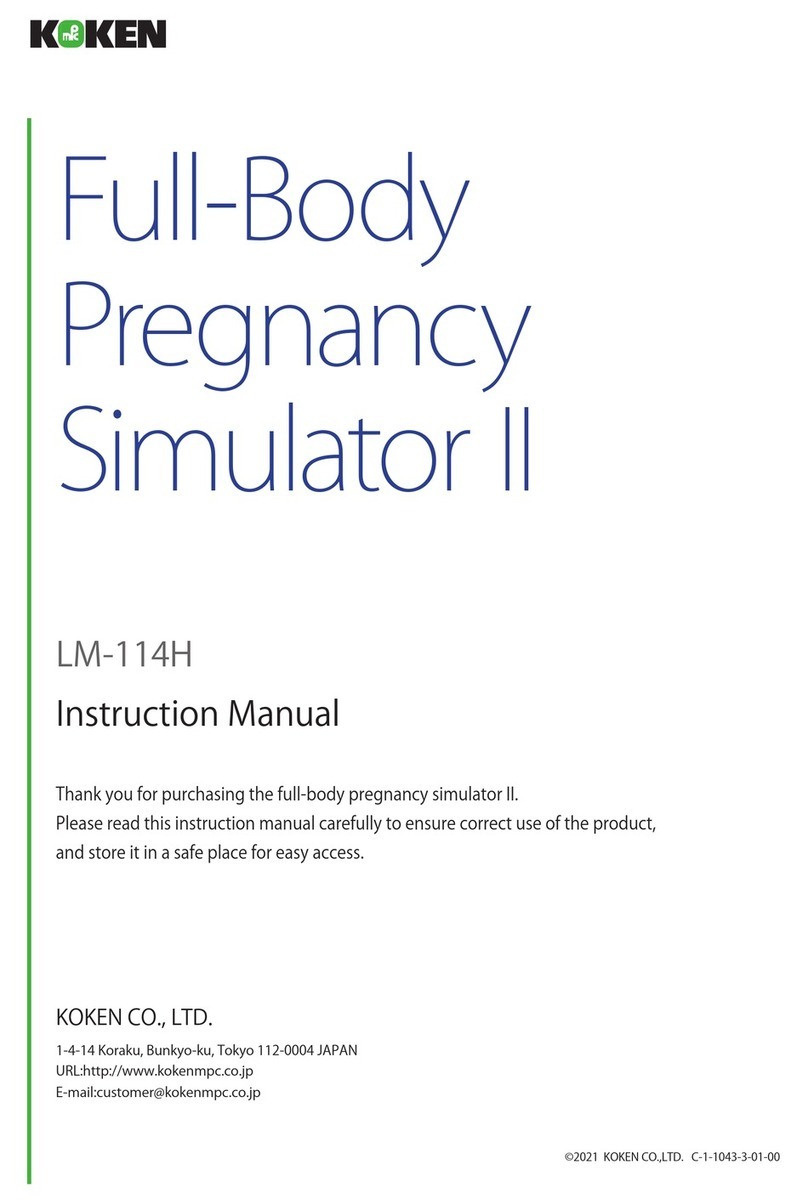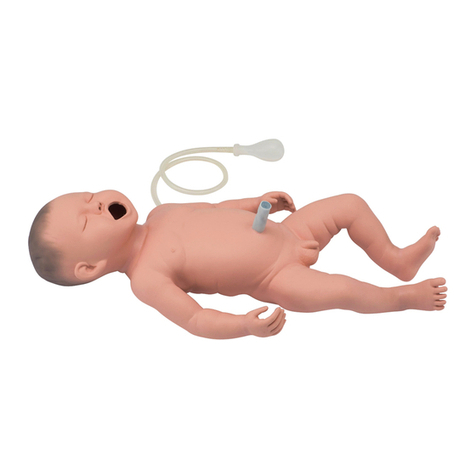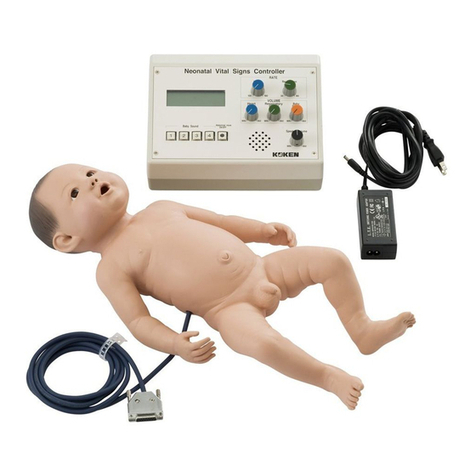
4
1. Description and Features
Description
This simulator can be used not only for conventional ultrathin bronchoscope insertion training, but
also for endobronchial ultrasound-guided transbronchial needle aspiration (EBUS-TBNA) training.
Features
1. This simulator enables practical training for endobronchial ultrasound-guided transbronchial
needle aspiration (EBUS-TBNA), in which the target lymph node is punctured while visualizing
ultrasonic bronchoscopy images of lymph nodes embedded in the puncture site. In addition,
because the sensation of touching the puncture site and cartilage with an endoscope has been
closely reproduced, it is also possible to conduct practical training using the external cylinder
method.
2. The ultrathin structures of the bronchi in the bronchi main body were reproduced using a special
manufacturing method, including the 5th order bronchi (e.g., B1aiα). Ultrathin bronchoscopes can
be inserted up to the 5th order bronchi.
3. A head model is attached, enabling insertion of the ultrasonic bronchoscope from the oral cavity
and conrmation of the bifurcation of the bronchi and esophagus.
4. The bronchi main body and the bronchi-support stand can be easily removed from the case.
5. The peripheral parts of the three-dimensional bronchi can be fully opened, and easily washed
with water following endoscope insertion training.
6. The material used is a special silicone rubber. Its elasticity confers a human body-like texture when
inserting the bronchoscope. The inside of the bronchi is also similar in color to the human body.
*The external cylinder method:
This is a method in which a puncture is made by first pushing the external cylinder of the
puncture needle against the bronchial wall immediately before puncture, and then advancing
the entire bronchoscope back and forth and tting the tip of the external cylinder of the puncture
needle into the depressed region between the cartilages. This method is expected to further
improve the diagnostic yield by enabling reliable tissue collection while avoiding cartilage
puncture.
Takeo Inoue, Noriaki Kurimoto, et al.
New Technique for Endobronchial Ultrasound-guided Transbronchial Needle Aspiration to
Improve Diagnostic Yield
J Bronchol Intervent Pulmonol 2013; 20: 28-32
*Caution
・During the production process, small bubbles and chips may form at the bronchial bifurcation;
these cannot be repaired.
・The material used for molding in the manufacturing process may remain in the bronchial unit.
In this case, use your ngers to massage the bronchus and then rinse o the remaining material.

































